Happy, HEALTHY spring everyone! This is Brie the Plant Lady here to give you some guidance and hope for these very stressful and confusing times. In truth, when I started writing this blog, COVID-19 reality had not hit home. Now, six weeks in, life has literally been turned upside down for EVERYONE. The one silver lining (if we can even say such a thing) is the sudden interest in gardening, specifically growing food, that has resulted from the disruption of supplies and income. Vegetable gardening is on the minds of almost everyone, and I am here to help.
Necessity was the Seed of Foodscaping
I started growing my own food, or at least supplementing what I bought, out of necessity early in my career. Back in 2006 I was too broke to buy groceries, so I started cultivating my ¼ acre landscape, literally hiding veggies under azaleas and hollies. It was through that experience that I started honing my “Foodscaping” techniques, specifically learning to grow LARGE quantities of food in an HOA approved style.
Spring Garden Projects
If you follow my Soil³ blogs and my social media, you will know I have been busy with garden renovation. I have been reinventing some areas to be more user friendly and productive. One of the motivating factors for this change were the Root Pouches that Soil³ started selling this spring.
Watch one of my garden renovation projects in this short video. Look for more videos on my YouTube channel.
As I surveyed my busy garden to locate a sunny, flat space to get the Root Pouches set up, I decided to remove two original rectangular boxed beds that I installed several years ago. When I tossed those rotten boards away, I felt a wave of relief.
 I placed my Root Pouches on bricks and pavers to try and prevent Root-knot nematodes from damaging the tomatoes I will plant later in the spring.
I placed my Root Pouches on bricks and pavers to try and prevent Root-knot nematodes from damaging the tomatoes I will plant later in the spring.
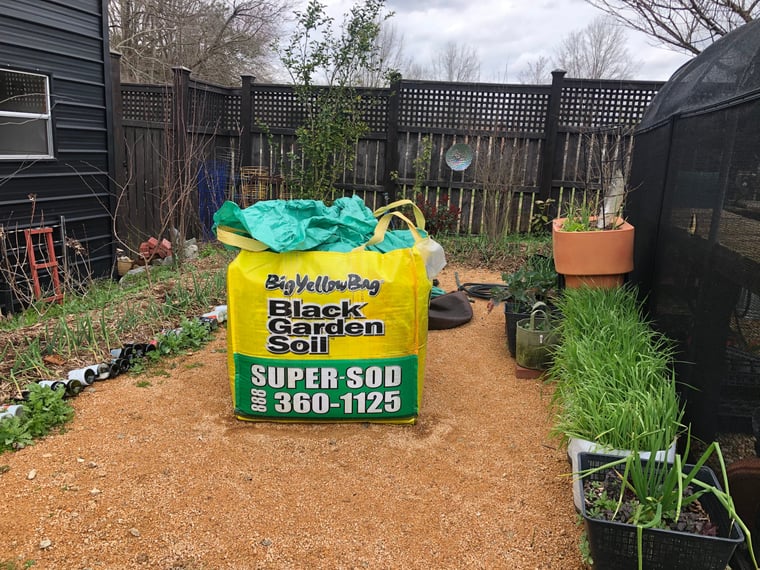
I am so happy with this new workspace area that I created! It is perfect for the delivery and storage of BigYellowBags of Soil³ compost - and other things too!

MYTH: Wooden raised beds are the best option for growing vegetables.
 For my April myth busting, I am going to take on a controversial subject: raised beds. As I indicated in my introduction, I haven’t taken the traditional approach to vegetable gardening for many years. If you have ever heard one of my presentations you know my motto is “Foodscaping”, aka incorporating edibles into the ornamental landscape to make better use of open areas in convenient to manage locations. With this approach you can plant vegetables in all parts of your yard – yes, in the front yard too!
For my April myth busting, I am going to take on a controversial subject: raised beds. As I indicated in my introduction, I haven’t taken the traditional approach to vegetable gardening for many years. If you have ever heard one of my presentations you know my motto is “Foodscaping”, aka incorporating edibles into the ornamental landscape to make better use of open areas in convenient to manage locations. With this approach you can plant vegetables in all parts of your yard – yes, in the front yard too!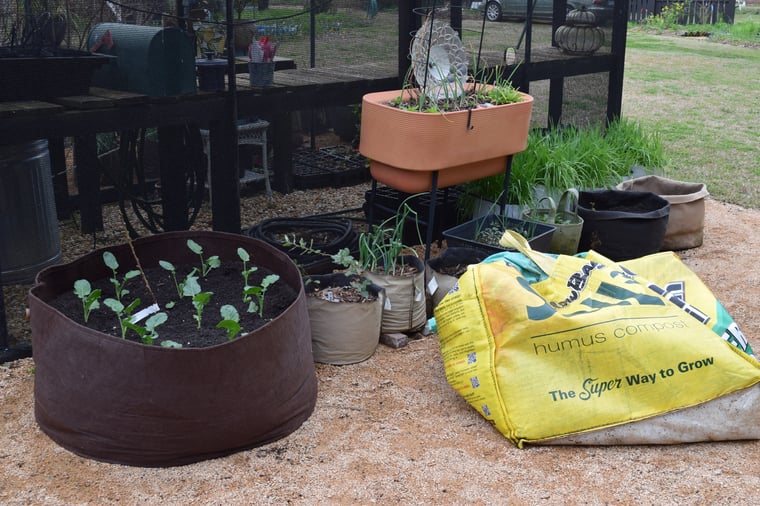
My BigYellowBag of Soil³ compost is almost empty after filling two 100 gallon Root Pouches. Still some left for a few other containers!
Like most people, I started off as a “raised bed” vegetable gardener. At some point over the past 30 years, home gardeners got brainwashed into believing the only way to grow food crops was to first invest in lumber. Obviously, this is great for companies that sell wood, but often folks blow their budget on the least necessary materials and then cut corners when it comes to buying quality plants and compost, like Soil³. The idea that you need lumber to create a “raised bed” is totally untrue. If you don’t want to deal with your native soil, simply mound Soil³ compost on top of the ground and get busy planting! Ta-da- you have a raised bed!
My goal as a horticulture professional is to encourage EVERYONE TO GROW SOMETHING, whether it is in the house, in the ground, or in a traditional raised bed. And before I make you feel bad, I am not saying you need to tear out your existing boxed beds. Honestly, we have ALL had them at some point and time. However, I would like you to consider some alternatives before you build any more!
Root Pouches to the Rescue
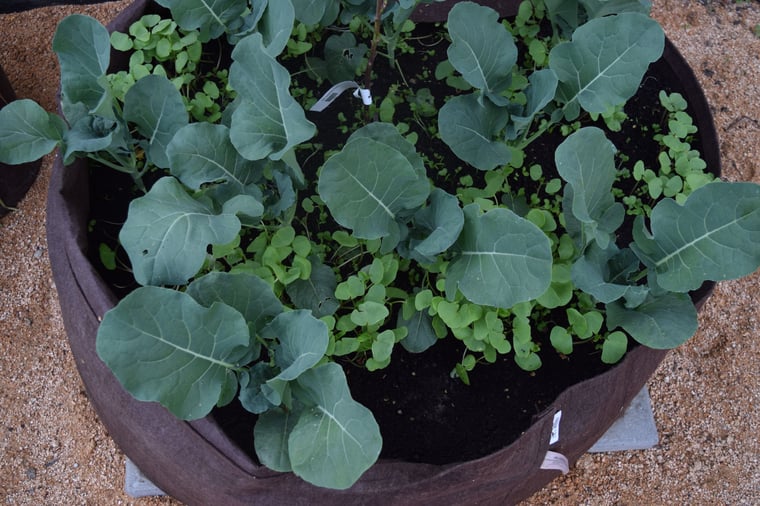
I filled this Root Pouch with broccoli starts and also buckwheat, carrot, and lettuce seed. After harvest, I will plant tomatoes and other summer vegetables in these containers.
The 100-gallon Root Pouches are a fantastic alternative to traditional lumber raised beds! This is the easiest garden set up ever - simply unfold your big Root Pouch and fill with Soil³ compost. One of the coolest things is that Root Pouches are made from recycled water bottles - that prevents plastic from going to landfills and oceans. The Root Pouch material provides protection from both the heat and cold, and allows air and nutrients to pass through freely which promotes healthy root growth. (Watch Jim Averna from Root Pouch being interviewed on BBC World News.)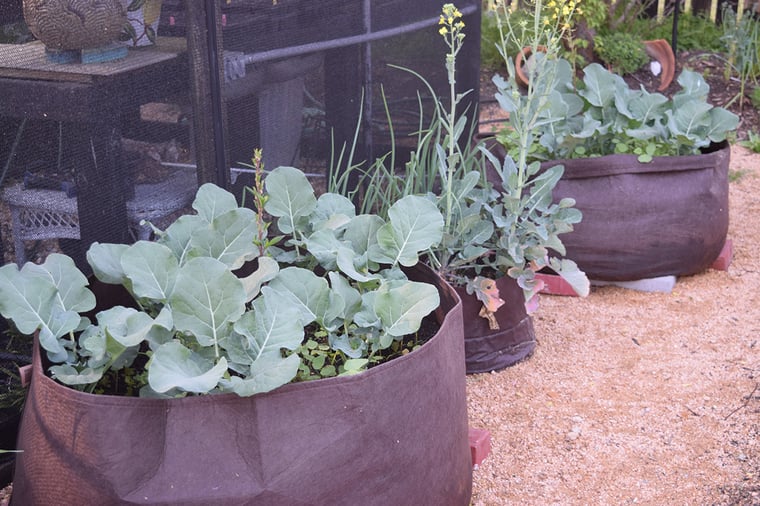
After three and a half weeks the broccoli has really grown!
You can order directly from the Soil³ website and receive two big Root Pouches with 1 cubic yard BigYellowBag of Soil³ compost. Local delivery in GA, NC, and SC is included in the price.
The Root Pouches are big, so make sure you site them in a sunny spot that can accommodate 8 square feet of growing space. Each pouch is 38" in diameter and 20" tall and holds 100 gallons of compost, perfect for growing ALL your favorite seasonable veggies in!
For my mid-March planting I selected cool season veggies that would grow through the spring season. I purchased broccoli plants from Home Depot and planted a dwarf peach tree in the center of each pouch. Then I seeded with a mix of buckwheat, carrots, lettuce, and peas to ensure ample harvests.
Because I planted in Soil³ compost I didn’t need to add any fertilizer. I have been watering as needed, especially on the days where temperatures have been unseasonably warm.
- Expert tip: Apply Bacillus thuringiensis (Bt) to avoid cabbage worm damage. Bt is a bacterium that has been used since the 1920’s and is often applied in organic farming. It naturally produces a toxin that is fatal to certain herbivorous insects including the cabbage worm which can decimate your Brassicaceae crops such as broccoli, brussels sprouts, cabbage, and cauliflower.
Everything is growing fast as the spring temperatures rise and the days grow longer. I can’t wait to share progress reports with you through the Soil³ Organic Compost Instagram account.
As always, I am here to help guide you through the vegetable gardening process and welcome your questions. Soil³ is truly is the secret to all my growing success, and I am confident you will have green thumb confidence by growing in the Soil³ Raised Garden Kit.

I would love for you all to keep in touch with me! Sign up for my brand-new newsletter full of easy and practical gardening advice. (You'll find it at the bottom of my BrieGrows.com home page.) This spring I am also offering virtual foodscape consultations and webinars for anyone interested in growing more food!
Until next month, happy growing!
Brie
All photos by Brie, unless otherwise noted.
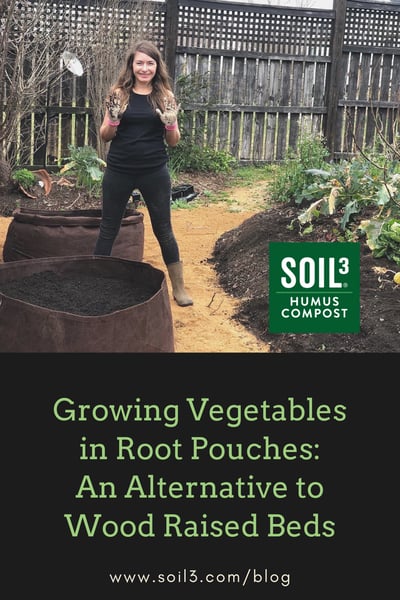
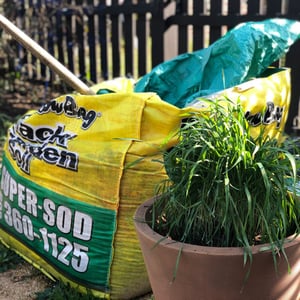


Did this help you out? Have any questions for clarity? Leave a comment below!